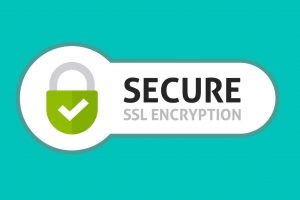It’s no secret that live streaming is all the rage these days. With how easy it is to broadcast live video over the internet, various forms of video content are being streamed daily from sports events to gaming to music concerts, or even talk shows and podcasts.
There’s no doubt that live streaming is now one of the most popular ways people share and consume content, and this is also why the live streaming industry is expected to be valued at more than $180 billion by 2027.
If you want to know more about live streaming, and especially how you can easily broadcast live video over the internet, keep reading! Below we’ll share how to broadcast your live online video in just 5 basic steps.
What You’ll Need To Prepare
While you can certainly use more sophisticated live broadcast setups, there are four essential elements to start broadcasting live video over the internet:
1. Audio and Video Source
A stream of video data for your live stream is called a video source, and if it’s audio data, we call it an audio source.
Live video from a camera is the most typical form of video source for a live broadcast, but a prerecorded video file from your computer can also be a video source. Similarly, various forms of microphones are the most common audio source.
2. Encoder
An encoder is essential in any live broadcast. The encoder converts or encodes the video signal produced by the camera from individual image files into a continuous stream of video files that is stream-friendly.
You can choose between a hardware encoder, typically more expensive but also more reliable with lower latency, or a software encoder.
A software encoder is essentially a program or app that runs on your computer or mobile devices, and there are also free ones like OBS that are pretty reliable. However, if you are planning to use a software encoder, you might need to purchase a capture card to connect your video/audio sources to your computer. (i.e. most computers don’t have XLR input and can’t connect XLR mics).
3. Video Hosting Platform
We have several different platform options to broadcast your content over the internet:
- Free social platforms: you can build your TV channel on platforms like YouTube, Facebook Live, Twitch, and other social platforms for free. Typically you don’t have too much freedom in how you are going to distribute and monetize your content.
- Building your own platform: you can technically build your own website, application, and video hosting/player platform from scratch. This option will obviously provide the most freedom, but also the most potentially expensive and time-consuming option.
- Using a professional video platform: with platforms like Viloud, you can customize your video player and your site/app with your own logo, brand colors, links, etc. You also have the freedom in how you are going to monetize your content and what types of content you’d like to publish.
4. Reliable Internet Connection
At the very least, your bandwidth should be 1.5 times your stream’s target bitrate. For example, if your target bitrate is 2 Mbps, then you’d need at least 3 Mbps of bandwidth.
5 Basic Steps to Broadcast Live Video Over The Internet
While your actual streaming setup workflow might vary depending on the equipment you use, it should involve these five basic steps:
Step 1: Connecting Audio and Video Sources To The Encoder
Check your audio and video sources, and check whether everything has power. Unless it’s impossible to do so (i.e. when the power source is too far away), always hard-wire your cameras, microphones, and other audio/video sources to AC power rather than relying on battery power. Set up your tripods, mic stands, stabilizers, and other essential accessories as needed.
Once everything is properly set up, it’s time to connect all these video/audio sources into your encoder. If you are using a hardware encoder, then this shouldn’t be much of an issue, simply connect the sources directly to the right inputs on the encoder. However, if you are using a software encoder, you might need a capture card if your computer doesn’t have the necessary input.
Step 2: Configuring The Encoder
Set up the resolution, bit rate, and framerate of the encoder according to your preferences. 1280×720 (720p) resolution is considered the standard these days, although you should aim for 1080p if possible.
For frame rate, aim for 60 fps, but 30 fps is considered acceptable, and use automatic or at least 3000 Kbps bit rate.
Step 3: Configure Your Video Hosting Platform
If you use professional online TV broadcasting software like Viloud, then this process is as simple as logging in to your Viloud account and set up a live streaming event. Configure the live stream as needed, and you can embed the live stream directly on your website/app or send the live feed to one or multiple Viloud channels.
Step 4: Enter URL and Stream Key Into The Encoder
The next step is to connect your encoder and your video hosting platform (in this example, Viloud). This is done by copying and pasting the stream key (or stream name) and the stream URL provided by Viloud to the respective fields in the encoder UI. Click Save or Apply to continue.
Step 5: Start Your Stream
Simply click Start Streaming or similar buttons somewhere in the encoder. Viloud or other video platforms of your choice should now provide notification that it is now receiving the signal from the encoder. Voila! Your live broadcast has started and you can use the encoder to control or stop your stream.
Conclusion
Broadcasting live video over the internet is much easier and affordable to do these days, thanks to the advancements in technology and the availability of easy-to-use professional streaming platforms like Viloud.
By following the steps we’ve shared above, we hope you can start to broadcast live video over the internet right away by understanding the important principles of live streaming.












